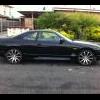Help With My Rb25 Na+T Project
Announcements
-
Similar Content
-
Latest Posts
-
By Murray_Calavera · Posted
He has an aftermarket hanger, it just sounds like your setup is much better then his. It doesn't sound crazy at all to me, to install an aftermarket hanger and end up backwards compared to the factory setup. Have a look at the tiny sock/filter/pickup on his fuel pump, surely the factory item is much much longer and I bet, better positioned as well. -
People with adult tastebuds like adult flavours. :P
-
Why are people so insistent on making dirty water?!
-
By Dose Pipe Sutututu · Posted
Fark what are the changes of that snapping like that, clean. Nek minnit, custom radiator goes in, with built in oil cooler like those discontinued PWR ones from yesterdeacades ago







Recommended Posts